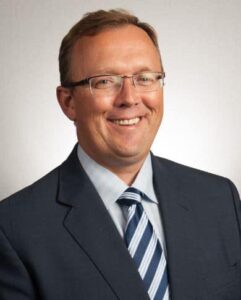“Signal & Noise” is a bimonthly, or sometimes monthly, column by Brian Taylor, AuD.
Disruptive innovation is a hot topic within our industry. The mere utterance of the term “disruptive innovation” at a confrence likely conjures thoughts of futuristic gadgets and gizmos that eliminate the need for audiologists and hearing instrument specialists. Look no further than the May-June 2015 issue of Audiology Today where Drs. Yanz, Margolis and Fabry engage in some engaging banter on the virtues of disruptive innovations and what they may mean to the future of audiology.
Some Surprising Disruptors for Audiologists
Since no one can predict future disruptive innovations, and considering the future is determined by factors beyond our control, namely the marketplace, it’s worth examining how other, far more ordinary disruptors can have a direct impact of how we practice.
A recent article in the Journal of the American Medical Association (JAMA) provides some valuable insight on how these other disruptors – ones not as dazzling as automated audiometry, self-fitting hearing aids or PSAPs, nevertheless provide audiologists and hearing instrument specialists with a clinical approach that stands apart. Most of us don’t think of critical thinking or communication skills as potentially disruptive, but when both are used in combination, they have the ability to transform patient care and the costs associated with it. Let’s look at these two mundane disruptors in more detail.
EBP Combines Critical Thinking with Communication Skills
Evidence-based practice (EBP) is a method in which clinical questions are addressed in a systemic approach, relying on locating, evaluating and synthesizing evidence, mainly derived from peer-reviewed studies pertaining to a germane clinical challenge or question. Some may recall that about 10 years ago EBP was a hot topic in audiology circles.
In fact, exactly one decade ago, JAAA devoted a special issue to it with a seminal introductory article authored by Robyn Cox. In her must-read article, Dr. Cox takes many of the principles of the late David Sackett, the person who largely pioneered the concepts of EBP in medicine. Since that time you see an upswing in the number of published systematic reviews that help clinicians apply the principles in EBP. This is certainly beneficial to those that understand the power of EBP and how to apply it to addressing clinical questions.
The problem, as I see it, is that very few clinicians actually apply any of the principles of EBP in their daily work.{{1}}[[1]] Disclosure: I teach two courses for A.T Still University and it is clear to me that most students are unfamiliar with EBP and how to apply its principles in the decision making process.[[1]] Toward that end:
- Courses on EBP must be a required part of doctorate level training.
- Reimbursement must be based on our interpretation of evidence.
- Audiologists must demand their AuD-level colleagues apply it whenever possible.
The Problem, Manifest in Our Practices
With respect to hearing aid selection, too often, audiologists rely on manufacturer claims, which are usually not verified with independent research or they resort to anecdotal thinking. The latter decision making process is extremely popular: “Product x is great, my last two patients loved the sound quality.”
Even if you were working with a very narrow range of age, say men with moderate-severe hearing loss between the ages of 75 and 85, anecdotal thinking can lead you down the wrong clinical decision-making path. The bottom line: learn how to use EBP to address clinical questions – it is likely to lead to better, more efficient patient care.
This is the post 4 in the “Signal & Noise” series. Click here for Post 1 , Post 2 , and Post 3.
Brian Taylor, AuD, is Senior Director, Clinical Affairs, for Turtle Beach/Hypersound. He continues to serve as Editor of Audiology Practices, the quarterly publication of the Academy of Doctors of Audiology. During the first fifteen years of his career, he practiced clinical audiology in both medical and retail settings. Since 2005, Dr. Taylor has held a variety of leadership & management positions within the hearing aid industry in both the United States and Europe. He has published over 50 articles and book chapters on topics related to hearing aids, diagnostic audiology and business management. Brian has authored three text books: Fitting and Dispensing Hearing Aids (co-authored with Gus Mueller), Consultative Selling Skills for Audiologists, and Quality in Audiology: Design & Implementation of the Patient Experience. His latest book, Marketing in an Audiology Practice, was published in March, 2015. Brian lives in Golden Valley, MN with his wife and three sons. He can be reached at [email protected] or [email protected].
feature image courtesy of Cambridge in Color









Thank you, Brian. As a wise research colleague of mine once said: “The plural of anecdote is not data.”
Evidence-based practices are good when dealing with mature technologies where innovation is not an issue: You don’t want your utility getting “creative” when they string wires and bury high pressure gas lines along your street.
However, it’s a whole different ballgame in technology, where innovation is the norm; and delays in waiting for evidence-based “research” can be fatal in the fiercely competitive marketplace, which is what drives innovation and ever-improving electronic devices. For example, if we relied on evidence-based research to prove that adding a camera into a mobile phone would make for better calls, we would still be using flip-phones.
One of the not-so-secrets of the hearing aid industry is the pricing structure and the incremental cost of enabling audiologic features: Dealer cost basically triples from the basic to the premium models, with some manufacturers so arrogant as to enable fee-based feature unlocking.
[Significantly, you don’t see this behavior in the brutally competitive CI marketplace among the four manufacturers, including the ones owned by Sonova and Demant, at least among the externals speech processors, as they want to put their best foot forward.]